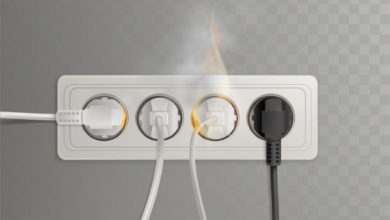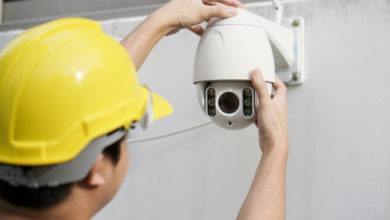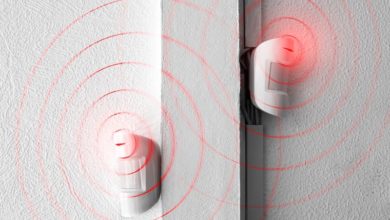5 Best Wireless Home Alarm Systems [2024]
Homeowners in 2024 are increasingly choosing wireless home alarm systems since they offer many benefits compared to wired home security systems. Whether you opt for a professional or DIY installation, wireless home alarm systems, smart devices, and wireless sensors will make the installation easier. It also allows you to move outdoor security cameras anywhere you want and add them to expand your home’s security as much as you want.
An excellent home security system does not have to break the bank. Today, it’s easier than ever to secure your home with the help of budget-friendly smart devices, gadgets, and reasonably priced monthly monitoring fees. Alternatively, you can choose a DIY installation option like SimpliSafe or Wyze instead of an established security company like ADT. It cannot be easy to choose the right system, regardless of the type of system you need.
Best Home Alarm Systems 2024
So, what is the best wireless home alarm system in 2024? To answer this question, we’ll look at what comprises a home alarm system and analyze all the available options from a wide selection of devices. A home security system depends on various factors, including monitoring plans, costs, equipment, features offered by various companies, and, most importantly, customer satisfaction. Here are the best wireless home security systems in 2024:
1. Comcast Xfinity
Xfinity Home security from Comcast is a terrific, affordable, and accessible service, so it was reviewed and got an 8 out of 10. Vivint and ADT are direct competitors, and it is a lot cheaper. It also works with plenty of third-party smart home-connected devices and does not require a contract. There is no need to bundle this service with another Comcast service (you don’t have to!), and the service is limited in its ability to do home automation.
2. Ring Alarm Pro
Ring’s Alarm Pro system integrates the Eero Wi-Fi router into its base station, changing the DIY home security game. Additionally, you’ll get all sorts of extra features, such as cellular-powered Wi-Fi backups, network security monitoring, and local processing and storage for all of your Ring devices. Aside from the cellular-powered backup Wi-Fi, you’ll also be able to integrate Alexa’s Guard Plus service (if you own an Amazon Echo speaker or display). In a review of the Ring Alarm Pro, it was given with a score of 9/10 for its impressive features.
Despite Ring’s troubling privacy practices and policies, the Ring Alarm Pro is an undeniably smart DIY home security system and is still competitively priced.
3. SimpliSafe
SimpliSafe has been tested several times and received an 8.5 out of 10 rating. SimpliSafe’s easy-to-install, easy-to-use DIY system is a great option if you’re looking for home security without all the extra Wi-Fi features of Ring Alarm Pro. The system has various useful features, including security equipment such as outdoor wireless cameras and motion detectors, which perform well in our tests. Depending on your needs, choose a starter kit for less than $250 or customize your alarm system with the exact mix of wireless devices you’d like. Security companies’ professional monitoring plans start at $15 a month. Still, you will likely want to upgrade to the $25 a month video monitoring service plan, including smartphone app controls and Alexa and Google Assistant voice control support for smart home security systems.
4. Vivint Smart Home
Due to the high upfront costs, Vivint received a lower review score of 7.7 than Comcast Xfinity, but if smart home devices integration is more important to you than money, it’s worth considering. It provides a great user experience and nice third-party smart home integrations — and you don’t need to sign long-term contracts to use it. This service is comparable to Xfinity’s month-to-month video monitoring charges, which range from $30 to $45 a month.
5. Wyze Home Monitoring
You can customize Wyze’s home security system to suit your needs, just like SimpliSafe. You can subscribe to Wyze Sense Hub for free with a $10 monthly subscription ($100 annually). You can add many options from that point, including motion sensors, indoor and outdoor wireless cameras, keypads, video doorbell cameras, and more. You can also buy a low-priced Home Security bundle from Amazon with a v3 wireless security camera, two door/window security sensors, a motion detector, a keypad, and a six-month monitoring subscription. A major drawback is that Wyze lacks cellular backup during power or internet outages. Wyze Home Monitoring is currently rated an 8.4 out of 10. For now, perhaps that feature will come with time, but for now, it was given an 8.4 out of 10.
Wireless vs. Wired Home Security Systems
It’s a personal decision whether to go wireless or wired for home security, and each system has its pros and cons.
Wired home security systems provide better signal and connection reliability. Wireless systems may not notice the difference without strong internet connections and cellular signals. Though neither type of security system is completely immune to hacking, wired systems are less likely to be hacked.
Installing a wireless home security system is easier than installing an analog system, even in spaces unsuited for wired systems. It’s easier to install these systems in and around your home; they’re cost-effective and secure — damaged wires won’t interfere with your monitoring or video footage.
Home security is a great investment, especially for people who often go out for the holidays or commute long distances for work. To learn more on how to wire a motion sensor light, please visit Security Forward.




